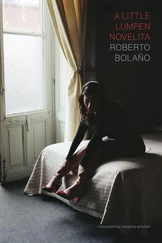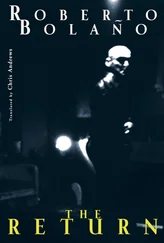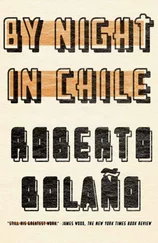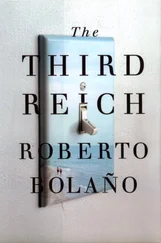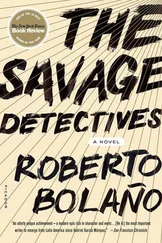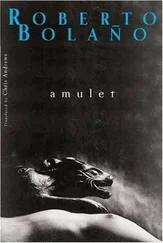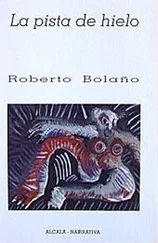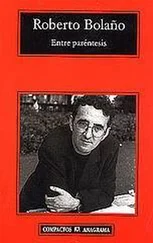Roberto Bolaño - Between Parentheses - Essays, Articles and Speeches, 1998-2003
Здесь есть возможность читать онлайн «Roberto Bolaño - Between Parentheses - Essays, Articles and Speeches, 1998-2003» весь текст электронной книги совершенно бесплатно (целиком полную версию без сокращений). В некоторых случаях можно слушать аудио, скачать через торрент в формате fb2 и присутствует краткое содержание. Год выпуска: 2011, Издательство: New Directions, Жанр: Публицистика, Критика, на английском языке. Описание произведения, (предисловие) а так же отзывы посетителей доступны на портале библиотеки ЛибКат.
- Название:Between Parentheses: Essays, Articles and Speeches, 1998-2003
- Автор:
- Издательство:New Directions
- Жанр:
- Год:2011
- ISBN:нет данных
- Рейтинг книги:4 / 5. Голосов: 1
-
Избранное:Добавить в избранное
- Отзывы:
-
Ваша оценка:
- 80
- 1
- 2
- 3
- 4
- 5
Between Parentheses: Essays, Articles and Speeches, 1998-2003: краткое содержание, описание и аннотация
Предлагаем к чтению аннотацию, описание, краткое содержание или предисловие (зависит от того, что написал сам автор книги «Between Parentheses: Essays, Articles and Speeches, 1998-2003»). Если вы не нашли необходимую информацию о книге — напишите в комментариях, мы постараемся отыскать её.
The Savage Detectives
Between Parenthese
Between Parentheses: Essays, Articles and Speeches, 1998-2003 — читать онлайн бесплатно полную книгу (весь текст) целиком
Ниже представлен текст книги, разбитый по страницам. Система сохранения места последней прочитанной страницы, позволяет с удобством читать онлайн бесплатно книгу «Between Parentheses: Essays, Articles and Speeches, 1998-2003», без необходимости каждый раз заново искать на чём Вы остановились. Поставьте закладку, и сможете в любой момент перейти на страницу, на которой закончили чтение.
Интервал:
Закладка:
DIMAS LUNA, PRINCE
Just now I was talking to a prince. His name is Dimas Luna, but his friends sometimes call him Dimas Moon. I think he’s descended from popes, although his lineage can be traced not to Valencian lands but to the dry plains of Toledo. It hardly matters: he carries in his blood the benignity of a certain long-lost Vatican and it shows in the way he treats others, whether friends, customers, or employees. Meanwhile, his curiosity is boundless: as far as I know he never went to college, and during the radiant summers of Blanes he speaks more than four languages. Now, with the arrival of Russian tourism, he even attempts a few words in the language of Pushkin, who would doubtless roll over in his grave if he heard him. His guardian angel is the Mediterranean. His great love, the movies. For a while he invented the strangest cocktails. I think he even won first prize at a competition in Lloret de Mar with a combination that included vodka, milk, and some sweet liqueur, plus other purely decorative things that I can’t remember. With Dimas Luna in Blanes I know that no one will ever be completely alone. The spirit of the Spanish tavernkeeper lives on in him unchanged: he came to the world to have fun, to do good, and not to give anybody a hard time.
ANA MARÍA NAVALES
I knew a few things about Ana María Navales. I knew she was a poet, I’d read a few of her poems somewhere, and I knew that she enthusiastically and successfully edited the Aragón literary journal Turia . A while ago two books of hers came into my hands: El laberinto del quetzal [The Labyrinth of the Quetzal], published by Calima Ediciones in 1997, and Cuentos de Bloomsbury [Bloomsbury Stories] (Calambur, 1999, though there is a previous edition). El laberinto del quetzal is a novel and I haven’t read it yet. The Cuentos de Bloomsbury are stories that revolve around the eponymous English group, and appearing in them are, of course, Virginia and Leonard Woolf, Lytton Strachey, Dora Carrington, Lady Ottoline Morrell, Virginia’s sister Vanessa Bell, the extraordinary Katherine Mansfield, the disturbing and lovely Vita Sackville-West, but also other figures, lesser known or — at least to me — scarcely known at all, like Ethel Smyth, suffragette, or Mark Gertler, painter, or Richard Kennedy, apprentice printer. Clearly, Ana María Navales knows everything there is to know about her subject or subjects. At no point do her stories seem ventriloquized or threaten to become funeral rites. They are elegant and perceptive. She’s bold enough to write in the first person, even when that first person is the voice of Virginia Woolf, and the result is first-rate and often unsettling. These are, as might be expected, stories in which literature and art have an important place. But they are also texts that radiate a deep love of life and freedom. Special mention must be made of the story “Mi corazón está contigo” [My Heart Is With You], a cruel and unflinching tale in the innocent guise of a letter written by Virgina Woolf to the now aging suffragette and feminist Ethel Smyth.
HELL'S ANGELS
A long time ago, in 1966, the American journalist Hunter S. Thompson wrote a book about the Hell’s Angels, the West Coast motorcycle gang, in which perplexed readers learned about some of the peculiarities of that most violent of urban tribes. The Hell’s Angels traveled the country on Harleys, drinking huge quantities of beer and getting into fights that today seem more picturesque than bloody, although some of their skirmishes were probably bloody too, the enactment of an aesthetic born out of the mythology of Westerns, out of the legend of desperadoes who, in unison, chose freedom and excess, white proletarian kids, macho and racist, uneducated and underemployed, perhaps the future members of the Aryan brotherhoods that sprang up in the prisons of the United States when the dream of the Angels, the endless highway, perished of its own inanity. Thompson lived with them for a few schizophrenic and exhausting months, and the result is this wild book (wild like all his books, since Thompson was, incidentally, always wilder than the Angels). Eminently readable even thirty years later, it lets us relive the Dionysian gang’s parties in the California of the beatniks and the first hippies, the orgies and the crude sexual commerce in which the Angels were experts, the police raids, and the vain and naïve attempts of Allen Ginsberg to ideologically redirect the cold-blooded gang. What became of the Hell’s Angels? There are still some on the West Coast but they don’t scare anybody. Their fame is just another Hollywood souvenir. Any gang of Chicanos or black kids (once so despised by the swastika-blazoned motorcyclists) could wipe them out in a single night.
THE GHOST OF ÀNGEL PLANELLS
Some winter afternoons in the center of Blanes one can glimpse the ghost of Àngel Planells. He appears to be on his way from the house of his nonagenarian sisters to the house of his nephew, the pastry cook Joan Planells, who today owns perhaps the largest collection of his works. Sometimes I stop by Joan’s pastry shop, and we talk about his uncle. A while ago he showed me a photograph of the first surrealist exhibition in London in 1936, at the New Burlington Galleries: in it you can see a small painting by Àngel Planells. The surrealist exhibition of London — Picasso, Domínguez, Dalí, and Miró were among the Spaniards shown — was a landmark in the revolutionary activities of a group that tried to export subversion on a worldwide scale. Later, for Planells, would come the Civil War and long years of obscurity during which, in order to survive, he had to paint horrible still lifes and give painting classes in a Barcelona where compassion was just an empty word in the mouths of priests and church ladies — hell’s cauldron. What did Planells learn in those years? We’ll never know. Maybe he perfected the art of humility. Maybe he learned the vanity of all striving. During the summers, however, he came up to Blanes and spent his time writing and painting at his sisters’ house. Little by little, at a time when surrealism had gone back underground, he turned to his old subject matter. This melancholy return is evidenced by the canvas Mariner esperant l’arribada de no sap què [Sailor Awaiting the Arrival of Something Unknown], dated 1974. It’s possible that at some point I crossed paths with him on the streets of downtown Blanes and didn’t see him. Now I do. Now sometimes I see him walking along our Paseo Marítimo. A slip of a ghost, lost in thought. The painter Àngel Planells, 1901 — 1989.
BLANES CHRISTMAS STORY
In the winter, some of the towns on the Costa Brava are like ghost towns. The tourist areas, especially, lapse into a lethargy that makes them resemble the cities of dreams or nightmares: cities of tall buildings and small apartments where we make the kinds of mistakes we regret forever, not knowing exactly why, just vaguely sensing that we could have done better, or simply not done anything at all, not made the effort, like the battles that Sun-Tzu or Clausewitz advised should never be fought. In fact, S-T or C advised that the only battles we should fight were battles that could definitely be won. The other day, strolling through one of those clusters of empty apartment blocks, I thought I saw a friend. He was coming out of a ghost building built in the sixties and probably afflicted with aluminosis, and he was dressed up as one of the Three Kings. Despite the Magi costume and the fast-approaching darkness, I recognized him and waved. He, however, was slow to recognize me. It had been a long time since we saw each other. He was accompanied, as might be expected, by the other two Kings. With some surprise, I discovered that both were black. My friend introduced them to me. They were two Gambians who usually worked in the fields outside of Blanes and who were for the moment unemployed. I only needed one black guy, he said, but I couldn’t find anyone white to be Caspar. We were the only people on that completely deserted street. So what are you doing here? I asked. I live in one of these apartments, said my friend. This is where I keep the robes, where we change. I gave them a ride. What will happen if a kid tells you there’s one black guy too many and one white guy too few? I asked before they got out of the car. My friend laughed and said that times change. And the kids are the first to know it.
Читать дальшеИнтервал:
Закладка:
Похожие книги на «Between Parentheses: Essays, Articles and Speeches, 1998-2003»
Представляем Вашему вниманию похожие книги на «Between Parentheses: Essays, Articles and Speeches, 1998-2003» списком для выбора. Мы отобрали схожую по названию и смыслу литературу в надежде предоставить читателям больше вариантов отыскать новые, интересные, ещё непрочитанные произведения.
Обсуждение, отзывы о книге «Between Parentheses: Essays, Articles and Speeches, 1998-2003» и просто собственные мнения читателей. Оставьте ваши комментарии, напишите, что Вы думаете о произведении, его смысле или главных героях. Укажите что конкретно понравилось, а что нет, и почему Вы так считаете.

